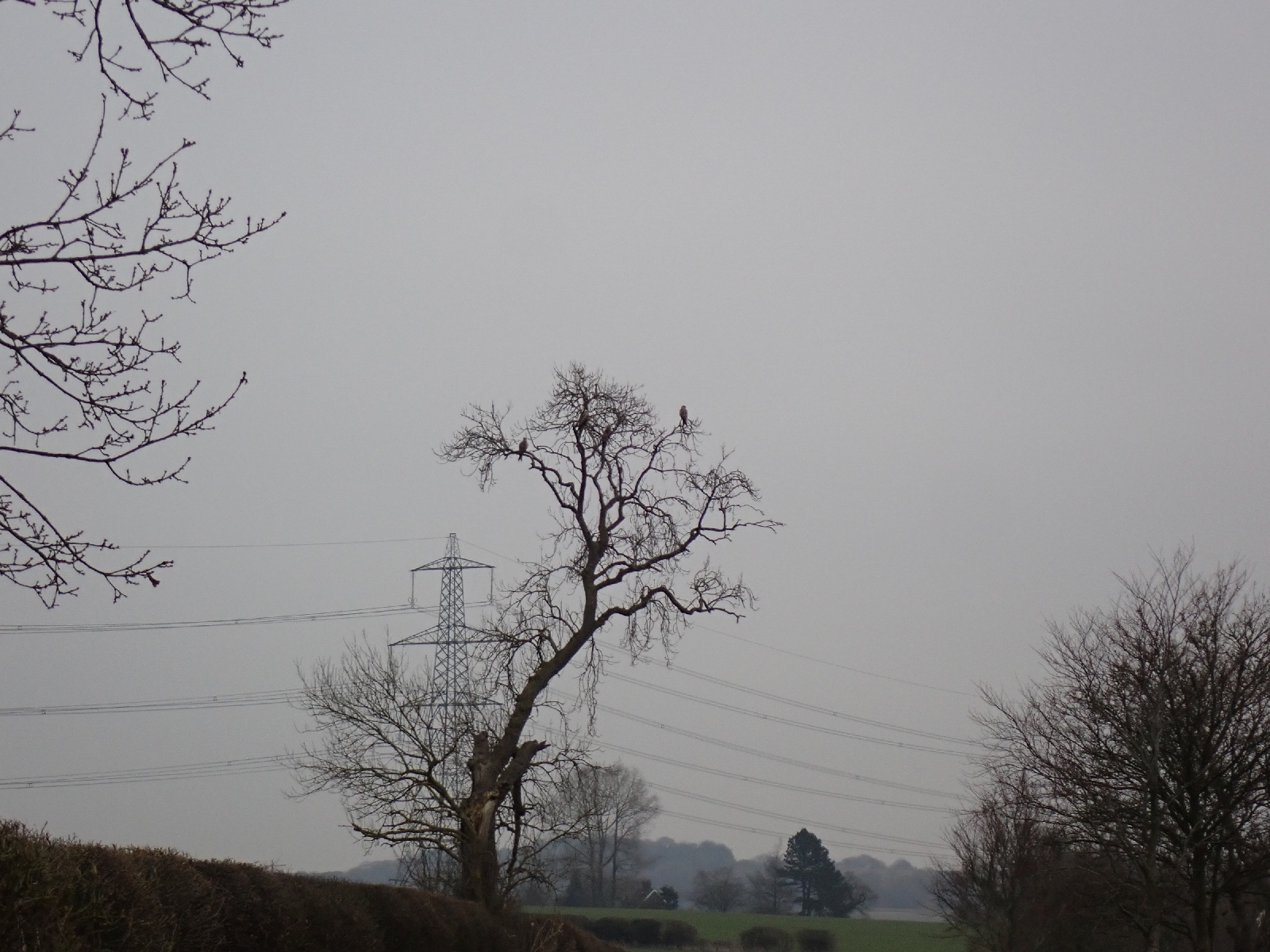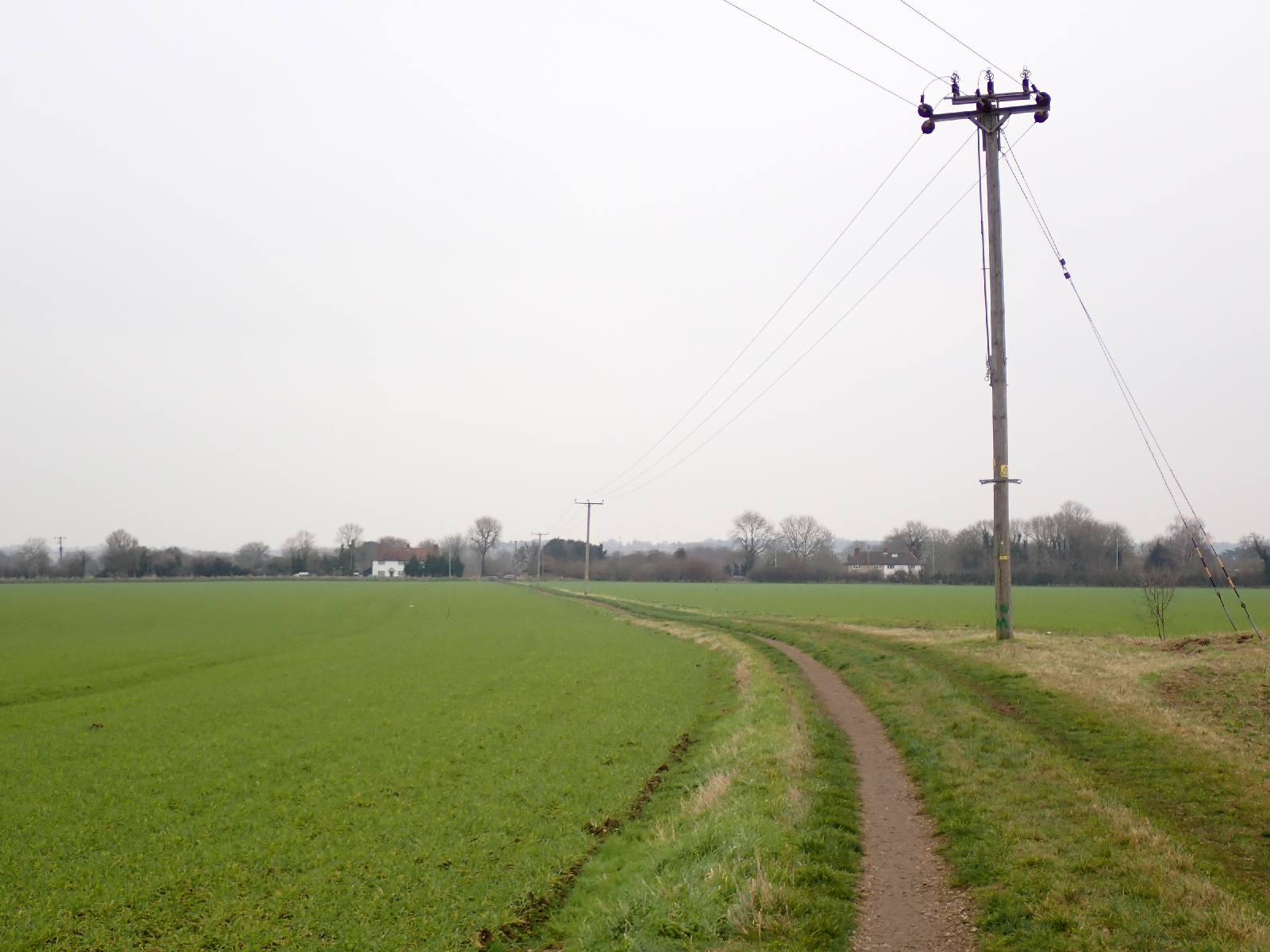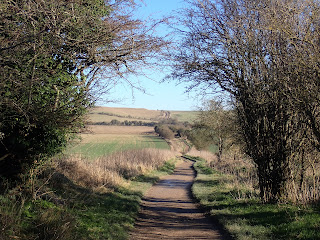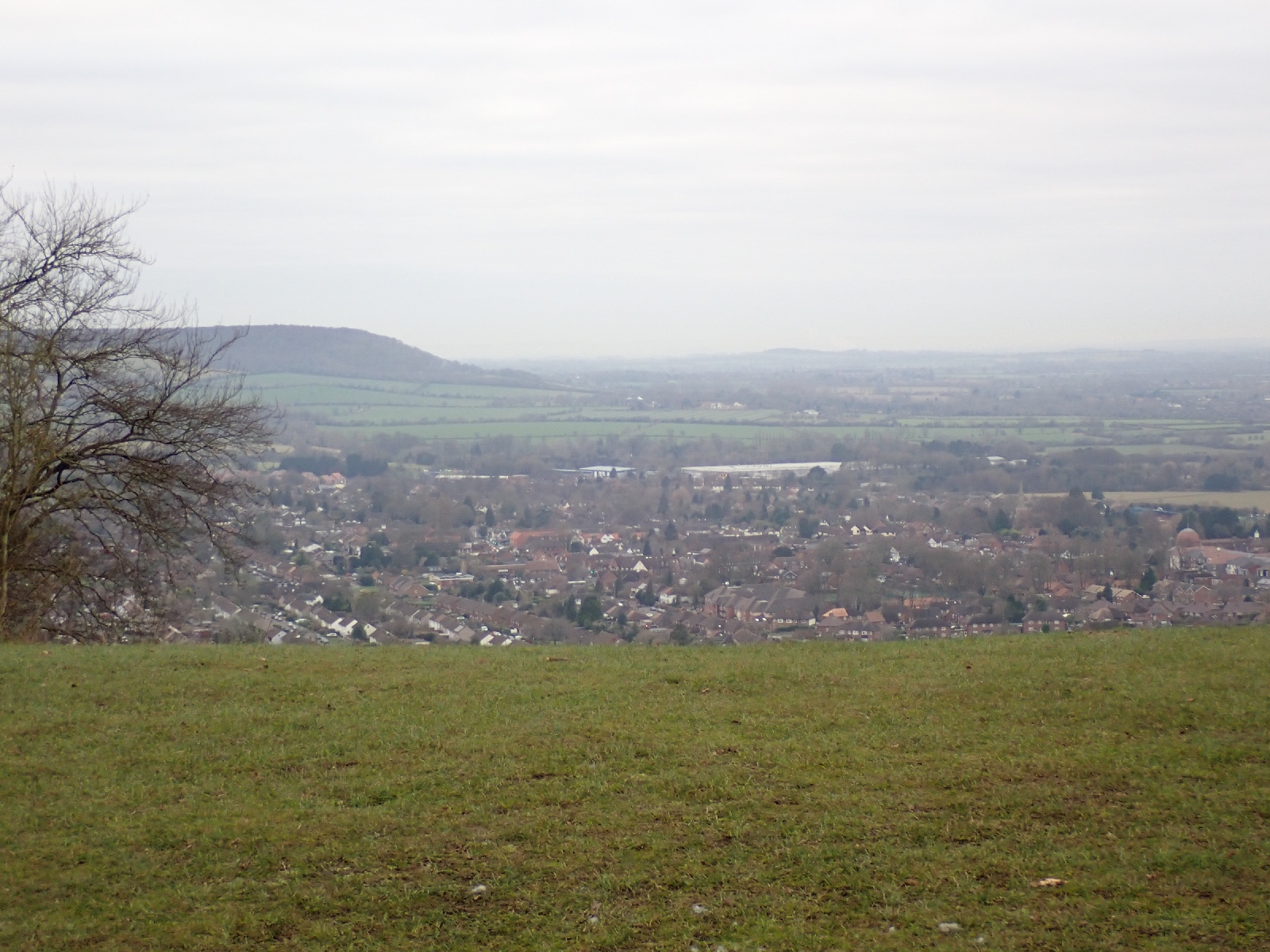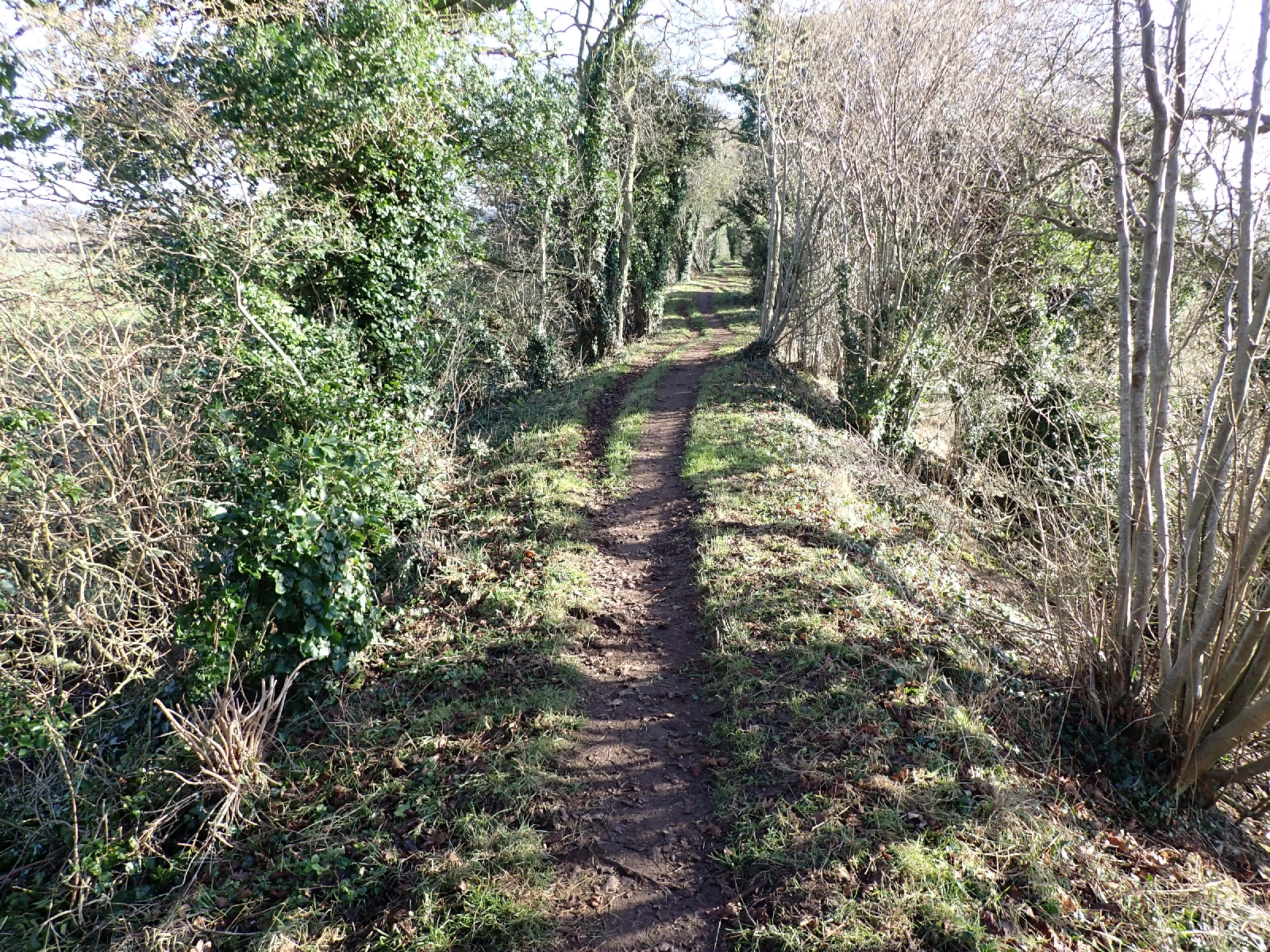I was disappointed this morning. A wind speed of over 40 miles per hour was still being forecast but the branches of the trees were barely moving. If I had known the weather was going to be this mild I would have camped out in Thetford forest last night instead of diverting into town. However the Travelodge was clean, functional and reasonably priced and I enjoyed breakfast at the Costa Coffee so I cannot complain too much.
Last night I arranged a taxi to pick me up and it duly arrived and took me to where I had left the Peddars Way last night. My driver knew where it was as the Covid lockdown had given him time to explore the local walks, there being no business. I began by walking on a boardwalk as it wound over an area of tall, dry reeds then crossed a small river. Then it was by a piggery, with lots of pink "porkers" out enjoying the sun, snuffling around. A variety of pig houses were spread over a large area for the piggies to shelter in. After that it was forest for the rest of the day, sometimes on wide rutted tracks, sometimes beside a busy road, occasionally on a path. Birch trees lined the tracks, their trunks highlighted by the low sun, behind them were conifers. Beech trees predominated in parts, their brown leaves and nuts covering the ground.
A "rest area" beside the busy A11, gave me the opportunity to buy a cup of tea and a bap. Shortly after I left Peddars Way and began a section of Hereward Way. By walking for a few days west on this route I will reach the area where two of my cousins lived. I was looking forward to meeting up with them. The Hereward Way is named after Hereward the Wake, who fought Norman conquerors in the 11th century in the area around the city of Ely, which I will shortly walk to. Surprisingly I found no signs or waymarks indicating I was on the Hereward Way, although other paths such as the Via Beata and St Edmunds Way were marked. Sometimes it seems that people prefer to create new routes rather than maintain and improve existing ones.
When the route followed a busy road I kept to the uneven ground beside it among birch trees. Although there was no path, many of the trees had initials carved in them, sometimes within heart symbols, and occasional dates between 1961 and 1971. The carvings had expanded with the tree trunks over the last 60 years. I imagined couples coming here long ago to enjoy some intimacy that might not be possible in their parents homes and carving signs of their love on the trees. After much more woodland I reached where St Helen's church once stood, only some mounds and an information board recorded its presence. Beside it was a holy well, now a spring at the bottom of old flint workings. Although the soil of Breckland is sandy, the sand is a superficial deposit covering the chalk rock. Wind blown material that collected in front of the ice sheet during one of the Ice Ages. They did not have to dig very deep to reach layers of flint in the chalk rock, flint once used to generate sparks for rifles. The sandy soil is not ideal for agriculture hence the large area of forestry through which I have been walking. Not long after there was a church still standing although no longer used for regular services. The little All Saints church at Santon, with its curious octagon tower, is maintained by a trust, and was a welcome place to rest and contemplate. Nearby was an old moat, no longer filled with water. No-one knows what it was for. After passing the entrance to the forestry office (by another church and a memorial to soldiers who have died) I took a path through woods with the low afternoon sun in my eyes.
Finally a track took me around the back of new housing, by some horses backlit by the sun, to the centre of Brandon. After deliberating between the angel cake and the citrus cake I chose the later to have with a latte at a coffee shop while waiting for my accommodation to open. Now thinking of my supper!



























